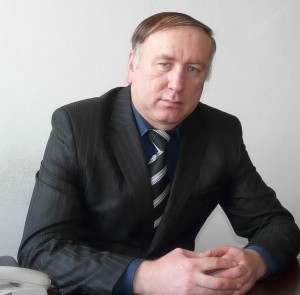 Head of Laboratory of Environmentally Safe Animal Production under Technogenic Contamination Conditions, PhD AgriScs
Head of Laboratory of Environmentally Safe Animal Production under Technogenic Contamination Conditions, PhD AgriScs
Contact:
Phone: +375 232 349 739
E-mail: tsarenok.alexander@gmail.com, a.tsarenok@tut.by
Scientific interests:
radiobiology and radioecology of agricultural animals, veterinary sciences and zootechnics.
Background:
Born on 3rd July 1965 in a village of Bakhani, Belychinsky district in Mogilev Region, Belarus. After graduating from the local high school in 1984, was accepted in Belorussian State Agricultural Academy, Faculty of ZooEngineering. From 1985 to 1987, was doing military service in the Soviet Army. Graduated from the Academy in 1991, and in July same year took a position of an engineer at Biochemistry Division of the Belorussian Branch of All-Union Research Institute of Agricultural Radiology (later – Research Institute of Radiology, and since 2019 – Institute of Radiobiology of the National Academy of Sciences). In 1997, defended a PhD thesis on “The Effects of “Clean” Feed Rations and Ferrocyne Sorbent on Decorporation of Cesium-137 from Bull-Calves Raised in Radiation-Affected Areas” (specialty 06.02.02 “Livestock Feeding Practices and Technologies” and 06.02.04 “Small Animal Science”), supervised by Dr. V. Levahkin and Dr. R. Ilyazov.
In his career progressed all the way up from junior researcher to senior researcher to Head of Laboratory (appointed in 2006).
Manages and co-leads a number of research projects in the framework of State and Union-State Chernobyl Programmes, as well as commercial contracts and international agreements.
Developed a number of reference documents, technical guidance and specifications used in agricultural practices in radioactively contaminated territories, including:
– Specifications on “Combined concentrated animal feeds with sapropel”;
– Specifications on “Compound lick-bricks with “Ferrocene” adsorbent for the cattle and small ruminants”;
– Specifications on “Combined concentrated feeds with “Ferrocene” for the cattle”
– Specifications on “Combined concentrated animal feeds with trepel”;
– Recommendations on “Agricultural production in the territory of radioactive contamination of the Republic of Belarus for 2021-2025”;
– Recommendations on “Optimization of mineral nutrition of young cattle in contaminated areas”;
– Recommendations on “The use of new recipes of mineral supplements based on rottenstone (trepel) in compound feeds for dairy and beef cattle raised in contaminated areas”;
– Recommendations on “Production of mutton in agricultural enterprises, farms and personal households located in contaminated areas”;
– Specific on-farm regulation on “A set of measures aimed at improving the efficiency of breeding horses on the territory of the Polesye State Radiation and Ecological Reserve (standard technological processes)”;
– Recommendations on “The use of complex mineral additives based on phosphogypsum for feeding lactating cows kept in the territory of radioactive contamination”.
Author and co-author of more than 150 scientific works, including five monographs:
– “Full-Nutrition Feeding of High-Productive Cows”;
– “Americium and Plutonium in Agroecosystems”;
– “Scientific Basis for the Recovery of Agricultural Areas Contaminated as a Result of Major Radiation Accidents”;
– “Animal Husbandry under Radioactive Contamination Conditions”;
– “Radioecological Aspects of Animal Husbandry (Consequences and Countermeasures after the Chernobyl NPP Accident)”.
Awarded with Certificates of Merit by the Gomel Regional Executive Committee (2016), Division of Medical Sciences of the National Academy of Sciences of Belarus (2020), Department for the Elimination of Consequences of the Chernobyl NPP Disaster (2022). In 2021, awarded a badge of the Department for the Elimination of Consequences of the Chernobyl NPP Disaster “For the Merits and Achievements in Overcoming the Consequences of the Chernobyl Disaster”.